“The Families Have Waited Long Enough!”
Kin of Cold War POW/MIAs Demand U.S. Action
 Navy Aviator Lloyd Smith Jr. in Picture Sent to His Family Days Before He Was Reported Captured by the Chinese -- See Story of this Photo Below
(Memorial Day Weekend, 2016) The families of US aviators lost during spy flights near the Soviet Union, China and North Korea have fought for 60 years to learn the fate of their loved ones -- some captured alive according to intelligence reports. Now time is running out for the aging wives and sisters of the missing, and they’ve grown tired of what they call indifference, stone-walling and secrecy from the U.S. government. [See updates below on China scamming U.S. over promised POW records + New developments on U.S.-Russia pow talks.]
|
|
 Dr. Beverly Deane Shaver
“The U.S. government has approached the investigation of its missing cases in a most ineffective way,” says Dr. Beverly Deane Shaver, 83. She learned decades after the 1956 loss of her husband Jim Deane that classified intelligence reports indicated he and a fellow crewman had been captured alive and tracked in Chinese captivity for at least two years after their plane was downed.
A more blunt appraisal comes from Charlotte Busch Mitnik, whose brother Sam was part of a crew shot down by the Soviets in 1952 (she had earlier lost a brother in World War II). The State Department informed Moscow that America was "compelled to believe" some of Sam's crew had survived and been imprisoned in Siberia (a Russian later reported Sam and another crewman by name as captives). Sam's wife Ruth died last week at the age of 92 without learning the truth about his fate, which Mitnik blames in large part on a lackadaisical U.S. government. “There has been nothing new for years (from the Pentagon)," she says. "Every year the same b.s.”
|
|
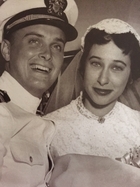 |
| Beverly and Jim Deane, Months Before His Disappearance |
|
|
 |
| Charlotte Busch Mitnik |
|
|
|
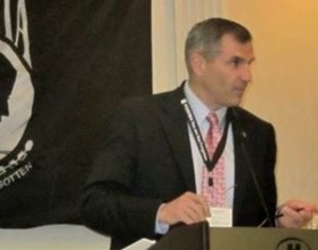 Michael Linnington, Director of DPAA
The Defense POW/MIA Accounting Agency (DPAA) is the newest incarnation of the oft scandal-plagued Pentagon POW/MIA bureaucracy and is now led by retired general Michael Linnington.
Family members and long-time observers of the POW/MIA issue uniformly praise the work of Pentagon field investigators who sacrifice their comfort, and sometimes risk their safety, in the painstaking process of recovering POW/MIA remains and interviewing potential sources abroad. They also appreciate the efforts of certain staffers and members of the US-Russia Joint Commission on POW/MIAs, including Cold War expert Dr. James Connell and Rep. Sam Johnson, a Korean and Vietnam War aviator and hero for his conduct as a POW in Hanoi.
But there is much less good will for the rotating heads of the POW office and their policy staff, who often lack historical knowledge of the complex historical issue and the time or inclination to acquire it. Linnington has assumed command after congressional and media pressure to streamline and accelerate the process of accounting for America's missing, including 126 aviators lost during Cold War reconnaissance flights. But progress remains elusive.
DPAA appears far from achieving the capability to account for 200 missing Americans annually, which Congress mandated several years ago. Many family members remain convinced they'll be long dead before DPAA accounts for their missing loved ones (including the almost 8,000 POW/MIA from the Korean War).
Linnington has recently been forced to admit the Pentagon's much-publicized agreement to pay China for research in Beijing’s archives has failed to resolve the case of even a single one of the many missing Americans last known or suspected to have been in Chinese hands during the Korean and Cold Wars. Beijing in effect pulled a “bait and switch” on the U.S., admitting years after signing the archives agreement that it considered files on Americans in its prisons “classified” and not part of the deal.
Meantime, the US-Russia Joint Commission on POW/MIAs has essentially ground to a halt due to the tense relationship between Washington and Moscow and lack of focus by the Pentagon and White House. Former insiders say Moscow has played a “shell game” with U.S. investigators, providing access to some (often very useful) documents and sources that provide important clues, but denying access to files from the KGB/GRU (military intelligence) that could quickly solve the fate of many Americans.
A Russian team from the Commission has been visiting Washington in recent days in an attempt to regain momentum. But the Pentagon did not supply advance notification, or offer meetings with the Russians, to POW/MIA families now at an annual convention near Washington, mere miles from Russian officials who might be able to account for their loved ones. “It’s just another way they (Pentagon POW/MIA officials) do things, not including family members,” says Janella Rose, sister of a Vietnam War POW/MIA and chairperson of the National Alliance for the Return of America’s Missing Servicemen (NAF). “It’s a pretty sad situation that the government keeps stonewalling families.”
|
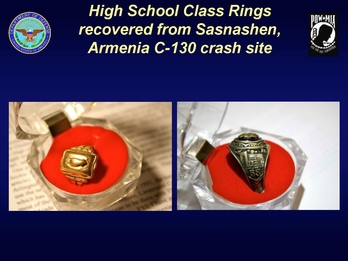 Remains of 6 Americans & Some of Their Rings Recovered
“It’s scandalous,” asserts Norm Kass, the former executive director of the U.S. side of the Commission, who notes the Pentagon has even removed from its web site large volumes of information Kass and his investigators obtained in the former Soviet Union. Kass, a Russian linguist and Vietnam veteran, compares the removal of the information and Pentagon failures to follow up on its leads to “Soviet revisionist history.” He attributes the situation to persistent bureaucratic infighting at the Pentagon that has impeded efforts to account for the missing, including those reported by former senior Soviet officers and other first-hand witnesses to have been shipped to Siberia.
Kass is even more alarmed by Mr. Linnington's new pronouncement that: “We have no conclusive proof that remains of POWs from the above wars were imprisoned in those countries. It follows that no cases of Americans held in the Soviet Union, FSU (former Soviet Union), or Warsaw Pact have been resolved by the U.S.-Russia Joint Commission.” This in a response to questions posed to Michael Linnington by NAF, obtained through the assistance of Rep. Chris Van Hollen (D-MD) and his indefatigable staffer Lillian Cruz. See more below.]
This assertion amazes and infuriates Kass, the former Commission senior executive. “I don’t know who’s writing Linnington’s scripts, but they should be fired,” he said, citing multiple cases in which the Commission has helped lead to the recovery of U.S. remains in the former Soviet Union and even Vietnam. These include celebrated cases such as the recovery of the remains of Capt. John Dunham, a downed Cold War aviator secretly buried on Soviet territory in 1952; six members of a U.S. reconnaissance plane downed over then Soviet-Armenia in 1958 and other cases not widely publicized.
|
Linnington's comment also implies DPAA believes no American POW/MIAs were ever in the Soviet Union, so the Joint Commission should not expect to find any of the missing, or their remains -- a position that contradicts available intelligence and numerous previous Pentagon and Commission statements. It also sends a message to Moscow that America’s top POW/MIA official may not demand tangible results from the Commission. Kass suspects the Pentagon may even be conducting an “intentional campaign” to downplay the Joint Commission.
Perhaps most infuriating to many family members is the continued classification of America’s own POW/MIA-related information, much dating to the 1950s, and the failure of Pentagon leaders to locate and then act on intelligence information obtained at the time the aviators were lost. Indeed, Linnington now states there is "no conclusive proof" any of the Cold War (or Korean War) POWs were captured and held back, despite contemporaneous and now declassified U.S. intelligence files reporting just that. (For more on Korean War cases of men known alive in enemy hands at the end of the war but never returned, see here, here and here.) At best this seems like institutional amnesia, at worst an attempt to dodge these challenging and diplomatically fraught cases.
[5/29/16 update: At a meeting with POW/MIA families yesterday, former senior U.S. official Norm Kass slammed the new Pentagon statement, saying the DoD POW chief is communicating a disturbing lack of institutional knowledge and determination to Russia. Kass also translated recent Russian media articles about new offers from Moscow to help locate missing U.S. World War II servicemen, including the crew of a submarine lost off Russia's Pacific Coast. Kass asked why this offer has not been shared by the Pentagon with the American people, as well as POW/MIA family members meeting in the Washington DC-area at the same time as the visit of the Russian delegation.]
|
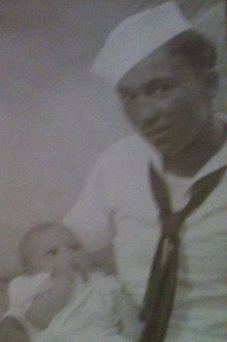 |
| Lloyd Smith with Daughter Sharron |
|
|
 Sharron Today with Her Daughter Terri Mumley
“I cannot fathom why this is still happening, other than there is still so much we are not being told,” says Terri Mumley, whose grandfather Lloyd Smith was reportedly captured by the Chinese in early 1953 after he and fellow crewmen William McClure were seen in a raft drifting to shore near Shantou, China, after a chaotic effort by U.S. forces to rescue the crew of their downed plane.
The Associated Press soon reported a Chinese manhunt for the survivors and U.S. intelligence received multiple reports they had survived and been captured, including one from a foreign missionary. Within a month, Hong Kong newspapers reported American prisoners had been marched through the streets of Swatow (now spelled Shantou) “as an object of public ridicule,” summarized a previously secret Navy file. The Americans had tried to persuade three local fishermen to take them to Hong Kong, the reports said, but one of the natives had turned them in. The fishermen were executed and the Americans imprisoned, then taken into the interior of China. Sources disagreed on whether the men were ultimately sent for long-term imprisonment or simply killed.
The Navy also appeared to have additional, perhaps still-classified information on the men’s fate. A classified Navy report concluded: “It is the opinion of this command that Smith and his companion survived the ditching without injury and were probably taken prisoner by the Chinese Communists.”
But Smith -- remembered by his family as a loving dad and ardent baseball player -- and McClure were declared dead anyway. “Why did they ever consider him dead?” asks Mumley.
|
 |
| Previously Classified Report on Lloyd Smith & His Fellow Survivor |
|
|
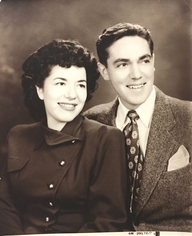 Ruth and Joe Danens
The risk of Cold War aviators falling into enemy hands became a reality for the Pentagon starting in April 1950, when a Navy PBY4 “Privateer” was shot down by Soviet fighters over the Baltic Sea. During the following years, reports of surviving crewmen from the plane began to escape the Soviet Union.
One of the aviators aboard was Joe Danens, who had married a couple years before. “Can you imagine? It's 1948 and the Jewish girl Ruth Feinberg from Passaic, NJ, and Joe Danens part Native American (Blackfoot) from Cutbank, MT, got married,” recalls Ruth’s daughter Gail Miney. “Not all that common in those days.”
U.S. investigators from the Joint Commission uncovered reports the spy plane had been salvaged, but Stalin himself ordered that fact kept secret from the U.S. These facts were supported by previously classified U.S. Navy intelligence files that concluded the Soviet Navy was operating captured US electronic equipment similar to that on the Privateer. “In view of the successful salvaging and operation of the electronic equipment, there exists the possibility that some or all of the crew were taken into custody and are being held by the Soviets,” the Navy concluded.
“There exist a number of reports from released Gulag inmates indicating that there were indeed survivors from this flight who were imprisoned in the Gulag. There are enough of these reports over the years to suggest that they cannot be ignored,” U.S. investigators concluded in the 1990s, adding: "(T)he frequency, content, and time frame of these reports at a minimum suggest that some American aviators were detained in the Gulag.” Some information on the incident still appears not to have been released to family members, including possible CIA information on Joe Danens, further Navy research on the captured electronic technology (the operation of which by the Soviets could indicate Moscow had captured and was forcing US prisoners to use the system), and analysis of the report of an American prisoner in Russia tattooed with the words "U.S. Navy" over an anchor. See more information on the Privateer incident here.
|
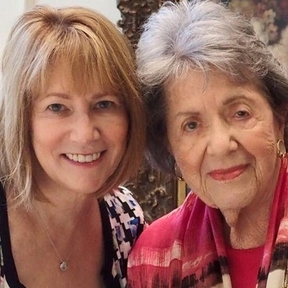 Gail Miney and Her Mother Ruth (Danens) Goldstein
After Joe was declared dead, Ruth married Robert Miney, a Navy flyer. Several years later Miney’s plane disappeared during a routine flight over the Atlantic; no survivors were found.
“Once again, no bodies, no plane recovery, no explanation of what happened.,” recalls Gail, her daughter. “Honestly, I don't know how my mother coped with these tragedies.” But the 92-year-old continues to request straight answers from the government for which she and her two lost husbands sacrificed so much.
|
See here the amazing story of 29 Americans still missing after North Korea shot down their Navy plane in an incident that almost led to war in 1969. We also obtained a declassified intel report of an alleged survivor alive in North Korea years later, which the Pentagon may never have investigated. See it here.
|
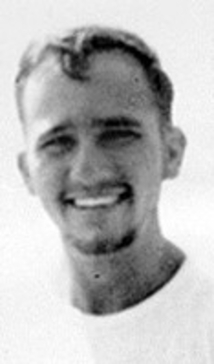 Jack Lively: MIA in P2V Shoot Down
On Nov. 6, 1951, Soviet fighters downed a Navy P2V surveillance plane over the Sea of Japan, off the Soviet Pacific Coast, leaving ten men missing.
US analysts believed the plane was attacked to send a Soviet message regarding spy flights along its borders. Because the plane’s mission was linked to UN operations, the State Department decided to downplay the case, upsetting at least one Pentagon official who recommended “something be done to show the Soviets they cannot get away with it.”
Little was done, either to threaten the Soviets or account for the missing crewmen. They were soon declared dead.
There the case remained until more than 40 years later, when a former Soviet soldier named Vladimir Trotsenko contacted US investigators in Russia.
In November 1951 Sgt. Trotsenko hurt his leg during a training exercise and was sent to Hospital 404 in the town of Novosysoyevka in the Primorskiy Krai of Russia near the Pacific Coast. A special hospital for air crews and officers, the hospital was crowded when he arrived, so Trotsenko was given a bed in a second floor corridor. He soon realized there was something unusual about the room nearby. A guard sat at a desk outside it.
When the guard needed to use the restroom, he turned to Trotsenko and asked him “to keep an eye on the Americans.” Inside the room, he could see four patients. “Patient Number 1 had an injured back and cast on his left arm, but could walk and speak. He was slender, 22 to 27 years old, about 5’ 6’’ with light hair and blue eyes. “Although unable to speak each other's language, the American still managed to communicate,” according to a US report. “Based on random words he recognized as well as gestures, Sergeant Trotsenko believes that the American was from Cleveland and had two children.”
Patient Number 2 was in traction, his arms suspended above his head. He was older, at least 40, heavyset and with a dark complexion. Patient Number 3 was in the bed next to the wall, his face bandaged and able to move slightly. Patient 4, by the window, was burned and also had face bandages. The last American had already died and been buried near the hospital.
Trotsenko stayed in the hospital for more than two weeks, watching the Americans and their visitors. He would later give US investigators a detailed description of the facility and its inhabitants.
The Americans were well cared for, treated by the facility’s best doctors. They ate the same food as the Soviet patients. And they were regularly interrogated by a Soviet lieutenant colonel and captain, both in Air Force uniforms. Trotsenko provided the last name for at least one of them.
One day a Soviet colonel arrived and "approached the second bed where the burnt older man was lying, and he pulled something out from under the sheet from around the neck of this patient. At first, I thought it was a cross. I did not really know what it was. It was some kind of medallion -- a round medallion. He pulled it out, looked at it, and then stuck it back under the sheet. He went around to all of the other patients and did the same thing. He looked at the medallion on the neck of each patient. He did not make any comments or say anything. He simply looked and stuck them back under the sheet."
The story of these circular medallions had a powerful effect on the investigation of Trotsenko’s story. US investigators thought the former sergeant was trying to describe a dog tag, which all American veterans knew was rectangle-shaped. Then they consulted a US Navy Artifacts Historian, who revealed that between 1940 and about 1956, Navy dog tags were round.
The US-Russia Joint Commission on POW/MIAs arranged for Trotsenko to visit the old hospital. There they found his descriptions were stunningly accurate. Even Russian members of the Commission, who often disputed information the Americans found convincing, concluded Trotsenko was telling the truth.
But there the investigation ended, because Moscow still refuses to release sensitive files on foreign prisoners held by its intelligence service.
|
 Major Sam Busch
A few months after Vladimir Trotsenko left the hospital and his new American friends, another American reconnaissance plane was shot down over the Sea of Japan on June 13, 1952.
This was an Air Force RB-29 on a classified mission to gather intelligence on Soviet shipping between the Sakhalin and Kurile Islands. Twelve men were left missing, including mission commander Maj. Sam Busch, Charlotte Mitnik's big brother. He had been studying to become a pharmacist, but was recalled to service for the Korean War.
|
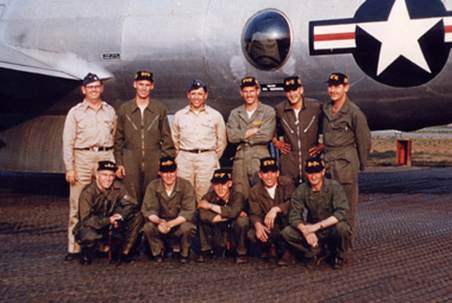
Sam Busch & Crew "Alone and Unafraid"
On June 18, days after the downing, the US sent a message to the Soviets, reporting floating debris associated with the mishap, such as oxygen bottles and life preservers (life rafts and even the entire aircraft were also seen on the water, according to various reports). “The presence of such items would indicate that there were survivors who may have been picked up by Soviet ships,” the State Department said, asking for Soviet help. The Kremlin claimed to know nothing about the crew.
A returned Japanese prisoner from POW Camp 21 in Kharbarovsk would have disagreed. He said twelve or thirteen US airmen were in the prison as of the spring of 1953. Guards told him they were the crew of an American plane shot down by the Soviets.
Another Japanese repatriate said he’d met an American in a hospital at Narionburg, in the Magadan-area. We have seen two dates associated with what we believe is the same report, March 1952 and October 1953. Both concern an American officer shot down and wrongfully charged with espionage by the Soviets.
According to the earlier report, the American was Caucasian, a captain who had crashed in the vicinity of Kamchatka. He suffered from wounds and lung disease. The captain told the Japanese prisoner “I am going back alive and fight the Russians to the finish. Also, I cannot accept the sentence of being a spy. The sentence of 15 years based on item 6 of Article 58 (espionage) is unjust.” He was described as about 28, with shaven blond hair, an oval face with protruding forehead, deep set blue eyes and thick eyebrows.
Among the US airmen searching for the RB-29 after it went missing was Air Force Sgt. William Koski. The next month he himself was shot down over Korea and sent to a special POW camp in China. There he was interrogated about Maj. Sam Busch, commander of the lost aircraft. “If he were dead at the bottom of the Sea of Japan, why all the interest?” he recalled, adding “I am as convinced today as I was then that they had Busch . . . and maybe a few others of his crew."
Russians on the Joint Commission claimed Moscow had no information on survivors from the flight. When American investigators asked why Soviet officers had repeatedly interrogated a Korean War POW about Busch, who had disappeared far away, Moscow said the Soviets might have picked up the name from “communications intercepts.”
Years later, a Russian émigré who had lived for years in and around the Soviet prison system said he’d learned that ''Bush and Moore” (Master Sgt. David Moore aboard Busch’s plane) from a US spy plane downed in the summer of 1952 “will forever remain in the soil of the Khabarovsk Region.” The émigré noted there might be worse fates than dying at the hands of Soviet officials: “By their horrible fate they (the American aviators) were spared the vastness of the (Gulag’s) (Soviet prison system) underworld.”
The émigré was told eight other survivors of the shoot down were put in solitary confinement in a prison in the city of Svobodnnyi, outside Khabarovsk near the Chinese border. Requests by a senior US official from the Joint Commission to investigate the émigré’s information on Korean War POWs were turned down by the Pentagon.
|
After further incidents, a 1955 Department of Defense memo concluded: “Air Force crews…are probably held by the Soviet Union. …The missions on which these aircraft were flying, while related to the Korean War, are highly classified…The US should not be surprised, particularly in light of Japanese and German experience with the Soviets in World War II, if a number of completely unrecorded Americans are ultimately found to be alive…”
The classified memo went on the warn the U.S. Department of State of the "undesirability of providing any information" to the families concerning the possible survival of their loved ones. (see the full memo in the appendix to this report.)
But the State Department apparently had its own ideas. The next year it issues an official demand to the Soviet Union to account for at least 10 aviators from the Busch and Danens crews reported in specific Soviet prisons, saying the U.S. was "compelled to believe" they had survived their downings and been captured.
|
 |
| New York Times, July 1956 (note error on date of Privateer incident) |
|
|
 Part of Declassified Files on Reported Capture of Jim Deane
Just a month later, Lt. j.g. Jim Deane took off on a classified surveillance flight from his base in Japan, leaving behind Beverly, his new wife and fellow Cornell graduate. Navy Plane No. 124363, a Navy P4M “Mercator” reconnaissance aircraft, was lumbering off the Chinese coast on the moonlit night of Aug. 22, 1956, when attacked by Chinese MIG fighters. It managed to issue a distress signal before disappearing. American search and rescue efforts, under fighter cover, recovered the remains of two crewmen off Shanghai, along with at least two life rafts. Two more of the dead were returned shortly after by the Chinese. That left 12 men missing. the Navy soon declared that no one could have survived the incident and declared the men dead as the incident faded from the headlines.
Then, in the early 1990s, Dr. Beverly Deane Shaver (remarried in 1960) ran across declassified intelligence reports on the incident discovered by the author of this article, plus the disturbing revelation that America had not asked China to return survivors from the shoot down.
The intelligence reports – not shared after the incident with Dr. Shaver, or any other families as far as we know – began coming in weeks after the downing and continued for around two years. They described how three Americans from the downed plane had been captured by a Chinese patrol boat. One died just hours later, but the other two were taken to the Baoding Army Hospital in Shanghai, where they soon recovered. By November 1956 the prisoners had been moved to the residence of one “Tsai Mao,” Chief of Public Information, Ministry of Social Welfare. The reports included physical descriptions, which according to Navy analysts appeared to fit James Deane and either AO2 Warren Caron or AT2 Leonard Strykowsky.
Dr. Shaver was struck by one odd descriptor – the man who seemed to fit Deane’s description, said the source, was “not hairy.” Neither was her former husband.
Intelligence reports continued to follow the fate of the men. They reported the captive Americans would face a hearing in April 1957; according to normal Chinese practices, the men would likely have to confess to their “crimes” and apologize. One of the aviators, apparently under pressure from his captors, was said to have promised “he will reside permanently in Communist China if given livelihood (sic) guarantees.”
The story ended with the man alleged to be Deane living outside Beijing under the control of Ch'en Lung, assistant chief of the Public Security Department in Beijing (Ch’en was later confirmed to be a real person), and the other American working at the “Sheng-Lung Corporation" in Shanghai.
Shaver wonders what reports came in next and suspects more documents on the case remain classified. Did Deane and his fellow crewman actually survive their incident? Or were the reports simply fake? According to a Pentagon report produced after Dr. Shaver resuscitated the case, “the Office of Naval Intelligence (ONI) concluded that these live sightings were inconclusive due to the lack of additional reports to establish their validity.” We hope this does not surprise the Navy; given the danger of intelligence collection in China, it is remarkable agents in China could get even the information they provided to America.
Responding to pressure from Shaver, the United States government asked China to investigate, but in 1992, Beijing announced it could find “no information to support” the reports. Still she pressed on. In 1995, an American official suggested Chinese records on the case might have been destroyed during the Cultural Revolution. This did not dissuade her. She even received assistance from two-time Secretary of Defense Donald Rumsfeld, a friend of Deane’s from flight school, and members of his high-powered network such as President Ford and Henry Kissinger.
Dr. Shaver journeyed to Beijing herself several times, first in 2000, and what she found there only deepened the mystery. A senior official with ties to the Ministry of Foreign Affairs told her Beijing still considered records on Deane "highly classified," which made no sense if he had really been killed in the crash. A former senior Chinese Air Defense officer admitted “two pilots” had been captured from the incident, she learned, but he claimed a poor memory when questioned later
The Chinese ultimately claimed they had no records the men had been captured, and were joined by some former US officials in claiming the crash could not have been survived (although many US POWs have returned alive from incidents where survival was discounted). A document Beijing handed over in 2006 did nothing to resolve the fate of the missing men. As with so many cases from the Korean War, there seems no question the Chinese have information they still refuse to share with the US. [The family of Deane's fellow crewman Carl Edwin Messinger also continues to seek answers and express deep frustration with the Pentagon's accounting efforts.]
[Some of the facts above are from an excellent article by Beverly's daughter Katie, a Washington Post reporter. See the story here.]
|
Beverly says she has obtained credible eyewitness reports of both Deane's capture and imprisonment in China. But without focus and support from the U.S. government, progress appears impossible.
“'Missing' is very different from 'Killed in Action,'" Beverly says. "The twisted hope, the pain, the guilt feelings of not having done enough to get answers follow the families forever."
She's frustrated with the Pentagon's efforts, calling much of it just for "public relations." Along with a real push by the U.S. to get answers from China, she demands a major initiative to declassify those decades-old U.S. intelligence files that may contain more information on Deane's fate, along with many other Cold War and Korean War POW/MIAs.
"Every one of the documents dealing with the missing should be declassified immediately. The families have waited long enough."
|
“My grandfather’s legacy and what he gave for his country is why I wear a uniform, and why four of my sons wear a uniform,” says Terri Mumley, a full-time non-commissioned officer with the National Guard.
“We have all answered the call just as my grandfather did and by answering that call we expect that our country will not leave us behind in a foreign land to suffer. It is time we demand accounting for those that were left behind. This government owes that to them!”
#
|
About the author: Mark Sauter has been investigating the fate of Cold & Korean War POW/MIAs since 1989, from Moscow to Pyongyang and through hundreds of Freedom of Information Act requests and extensive research at National Archives. His research has been cited by major media outlets from the New York Times and ABC News to the Associated Press and Wall Street Journal.
Sauter served as commander of a U.S. Army guard post in the Korean D.M.Z. during the 1980s and went on to become an investigative correspondent for print and television news outlets before entering the business world. He serves as a volunteer researcher for POW/MIA family groups, including NAF. His most recent book on the topic, co-authored with leading Korean War POW/MIA case expert John Zimmerlee (the son of a Korean War MIA), is American Trophies: How US POWs Were Surrendered to North Korea, China and Russia by Washington's "Cynical Attitude." (with a foreword by Pulitzer Prize-winning New York Times reporter Sydney Schanberg; see below)
Sauter is a graduate of Harvard University and the Columbia University Graduate School of Journalism.
|
Source Documents and Additional Information/Photos
|
Statement from DPAA Director Michael Linnington (5/24/16)
Excerpts Pertaining to the Cold War; Not in Original Order
Statement Included Additional Information on Korea/Vietnam POWs Not Discussed Above
|
Story Behind the Picture of Lloyd Smith Jr.
Smith sent this picture to his family the month before he went missing. On the back of the photo was written: "I am looking for my family. Guess they are too far away." More info on the incident below.
|
Lt. j.g. John Fette, Missing in the 1950 "Privateer" Incident
His Niece, Kathy Fiffick, Is Still Searching for Answers on His Fate
|
Reuben Baggett, Missing in the P2V Incident
|
|
|